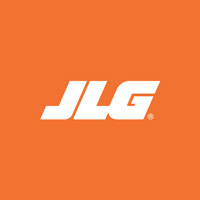 JLG Industries, Inc.
JLG Industries, Inc.
World-leading access equipment manufacturer
____
McConnellsburg, PA
Telehandlers are extremely versatile pieces of equipment that can be used across a myriad of job site applications. These machines are known to some in the construction and access industries as telescopic forklifts because of the extended boom and attachments. These rugged machines can also accomplish jobs similar to how a forklift would, but with more power, reach and versatility to the job site.
Some of the more common applications include: residential, wind farm and masonry construction, steel erection, bridge construction and repair, oil and gas exploration, building restoration, and material handling in industrial settings.
With so many jobs to be done, it's important to ask the right questions upfront when renting a telehandler. This will ensure you get the right machine for your specific application.
With so many jobs to be done, it's important to ask the right questions upfront when renting a telehandler. This will ensure you get the right machine for your specific application.
When renting a telehandler you need to consider a number of factors:
What is the weight of the load to be placed?
What heights will you be placing loads?
What forward reach is required?
What type of material is being handled?
What attachment is most appropriate for the type of material?
On what surfaces will the machine operate?
How much space is available to operate the machine?
Is an open or enclosed cab more appropriate for this job?
Are there any options and accessories that need to be considered, such as lighting?
Will the rental company be delivering the machine to your job site?
Does the rental company provide training for the equipment you are renting?
Two of the most important aspects you’ll want to consider before deciding on your ideal rental unit are how much weight you need to lift and how high you need to lift your load. Telehandlers are generally categorized by maximum lift capacity and/or maximum lift height, and the equipment is rented based on these key attributes. But you can’t assume a higher lift capacity means the unit has a greater maximum lift height. Some models will be designed to lift heavier loads at lower heights.
The environment and terrain in which the telehandler will be working is also important to factor into your decision. Make sure you rent a machine that is well equipped for any specific challenges your setting may pose. Are you working in muddy or rough terrain? If so, you probably want to make sure you rent a unit with outriggers. Will you be using the unit on a ground surface where the weight of the machine needs to be taken into account? If so, your rental house will be able to assist you in choosing a properly weighted machine.
You should also work with your rental professional to select the appropriate tires for the unit you will be renting. There are several choices you’ll want to discuss based on your job site. Foam filled, solid and pneumatic tires are all most likely options, but which is right for your specific application?
Besides the type of environment where the telehandler will be working you should also think about the time of day when the unit will be in operation. Are you planning to complete any work at night? There are a variety of lighting packages available which can illuminate areas around the machine and the boom. In addition, road lighting packages are available which contain headlights, tail lights, brake lights and turn signals. There are also special packages available for arctic and cold weather, which allow the telehandler to operate in extreme temperature conditions.
Other options to consider are those that can increase operator comfort, confidence and productivity such as enclosed cabs, heat, air conditioning, reverse cameras and object sensing systems. The telematics options on an individual unit may be something you want to discuss as well depending on the length of time you’ll be renting the machine.
Attachments are often rented with a telehandler and are one of the main factors contributing to its versatility. While a standard fork and carriage is by far the most common telehandler attachment used, there are many other application specific attachments available including a variety of buckets and grapples.
If you’re interested in renting a telehandler with attachments, be prepared to describe in detail the types of material which you intend to pick, carry and place to your rental company. Let the experts help you determine the appropriate attachment for your specific job site application.

Now that you’ve selected the right unit, you need to get it to the job site. Will you rely on the rental company to drop off and pick up the unit from your job site? Or, do you plan on transporting the unit yourself to save on delivery fees? If so, make sure you have a truck/trailer that can safely transport your telehandler between locations.
Okay - you’re all set. You’ve picked out the perfect unit for your application and the rental company just dropped it off. Now what? Construction site safety should always be top of mind You want to ensure that anyone who will be operating the units you have on site is trained properly to do so.
Rental companies typically provide training for the units they offer so be sure to discuss any required training classes with the rental company that provides your equipment. Besides your rental company, training programs may be available directly from the manufacturer of the equipment you choose to rent. It’s critical for anyone operating equipment to have the skills they need to work safely and efficiently.
Want to stay up to date with industry news and trends similar to this? Make sure you subscribe below to receive monthly updates from Direct Access with newly posted content so you never miss important information.